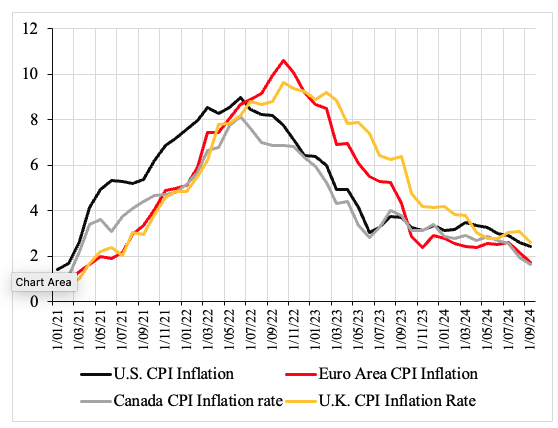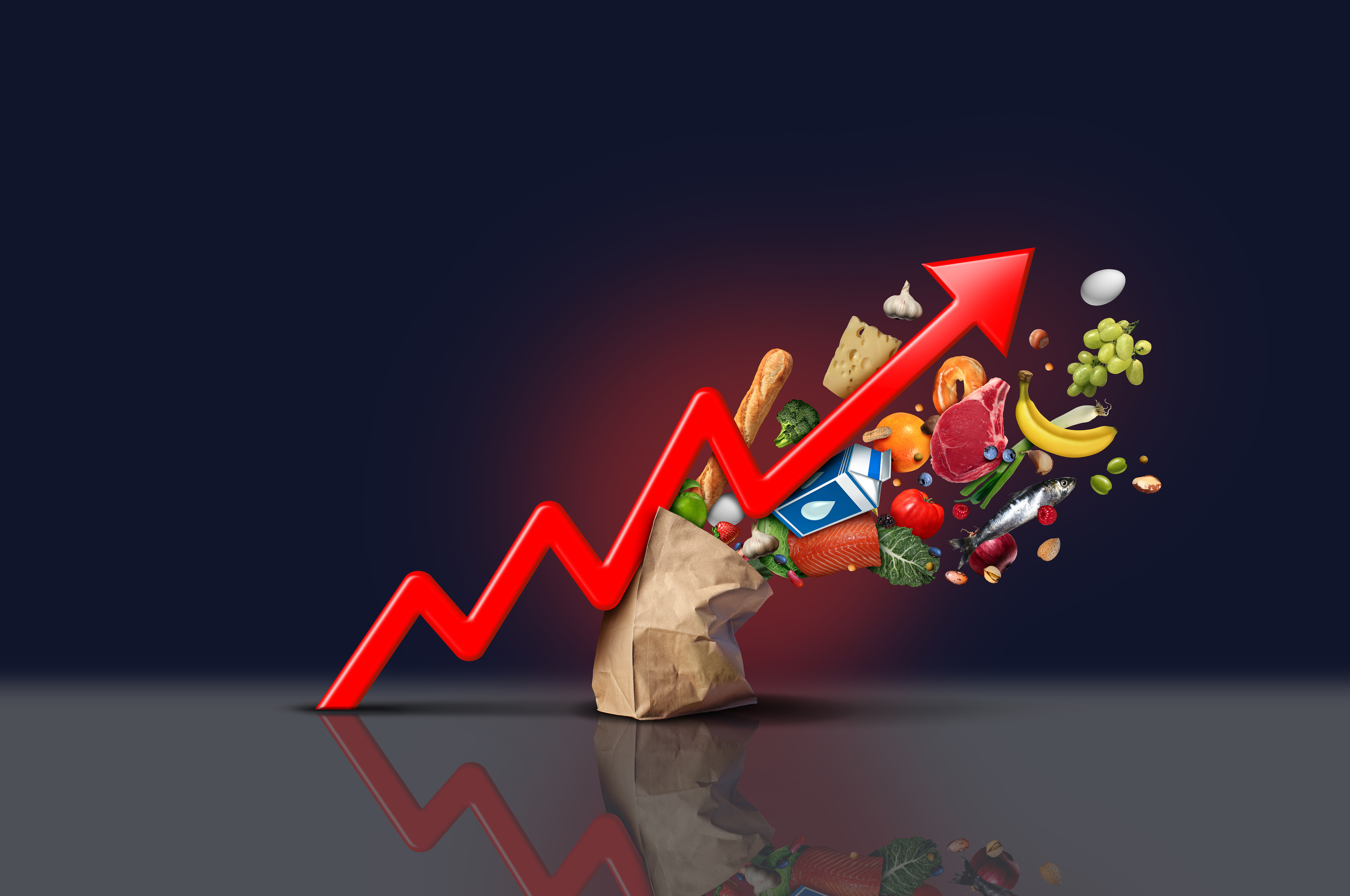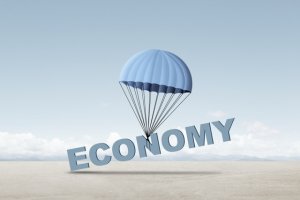The firehose of affluent consumption continues to drive inflation, not the stimulus package
It must be the Wall Street Journal’s DNA. Nothing else easily explains why the normally careful Nick Timiraos would focus so much of his account of “How the Democrats Blew It on Inflation” on the hoary argument that the “Biden Stimulus” somehow triggered worldwide inflation back in 2021.
The argument never made much sense, since, as numerous studies have documented, supply-side factors drove the biggest part of the inflation and it hit virtually everybody, regardless of their stimulus policies. This is shown in Figure 1, which presents the consumer price inflation rates during 2021-2024 in the U.S., the Euro Area, Great Britain, and Canada. It can be seen that all countries went through a very similar inflation experience, with consumer price inflation in the Eurozone and the U.K. peaking at even higher levels than in the U.S.
Figure 2 presents the structural government budget deficits (as a percentage of potential GDP) of these four countries during 2021-2024. It is evident that the U.S. government ran much larger structural budget deficits than governments in the Euro Area, the U.K., and especially Canada. Despite these substantial differences in the fiscal policy stance, the consumer price inflation experience has been remarkably similar across the countries (Figure 1). This just shows that the inflation was largely driven by supply-side factors, as numerous studies including the study by Bernanke and Blanchard (2024) for 11 economies have shown.
Figure 1: Consumer Price Inflation in the U.S., the Euro Area, the U.K. and Canada (Annualized monthly inflation rates; January 2021-September 2024)

Source: FRED database.
Figure 2: Structural Government Budget Deficits in the U.S., the Euro Area, the U.K. and Canada (as a percentage of potential GDP)

Source: IMF World Economic Outlook database (October 2024).
We are far from the only people making these arguments, but we found the Journal’s blithe resuscitation of this almost prehistoric line particularly jarring. Back in early 2023, we traced very carefully how federal spending flowed into the economy, using a variety of data. It quickly became obvious that most of the stimulus money was long out the door when most of the supply shock inflation hit. As we summarized: “the key data series—stimulus spending and inflation—move dramatically out of phase. While the first ebbs quickly, the second persistently surges.”
Besides climate change, war, and the other shocks that everybody but the Journal now seems to recognize, we identified another cause of inflation that the Biden administration never tried to deal with: the vast increase in spending coming from the rich. As we have documented in two subsequent studies, the firehose of affluent consumption continues to drive inflation, especially in services.[1]
There is nothing mysterious about the source of this spending: Mostly it arises from the vast, historically unprecedented (in peacetime) increase in the wealth of upper-income groups produced by the Federal Reserve’s quantitative easing program.
What’s bizarre though, is, that both of these arguments find support in recent research even by the Federal Reserve.[2] It’s simply silly for the Journal to keep preaching the gospel according to Joe Manchin as if there is no counter-evidence. And Democrats and everyone interested in serious election postmortems need to get their facts straight if their deliberations are to be anything but pure vanity projections.
Notes
[1] Ferguson and Storm, “Trump vs. Biden: The Macroeconomics of the Second Coming”; Good Policy or Good Luck? Why Inflation Fell Without a Recession.
[2] Cf. Thomas Ferguson,”INET Research and the 2024 Election;”; S.H. Hoke, L. Feler, and J. Chylak, “A Better Way of Understanding the US Consumer: Decomposing Retail Spending by Household Income.”











